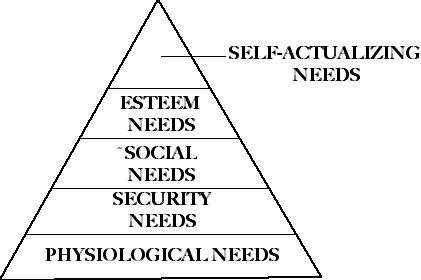The arrangement of items and or sub-items by size or other criteria such as relative control; can be applied to actions, underlying operations, and social relationships. Abraham Maslow (1908-1970) was responsible for perhaps the most widely known application of the hierarchy concept with his hierarchy of needs model, first published as a paper in 1943, but then more fully in his book Motivation and personality (1954). According to this model, people are motivated to fulfil basic (or deficiency) needs (e.g.physiological, safety) before progressing to more complex (or growth/being) needs (e.g., esteem, self-actualization). In order to capture its hierarchical construction, the model is often portrayed as a pyramid. with the most basic needs at the base and self-actualization at the peak, the latter being achieved only about 1/100 people according to Maslow (see figure below). Maslow himself never depicted his model in the form of a pyramid. He devised the term metamotivation as a means for denoting those individuals who strive to go beyond the scope offered by basic needs to a continuous process of attempting to better themselves, and thus are driven by being needs. Those who achieve self-actualization are typified by self-awareness, a desire for personal growth and a lack of concern for the opinion of others. Surprisingly, given its iconic status in psychology, the model has been subjected to relatively little research, as well as some trenchant criticisms (e.g., his own research on self-actualization was based on a select sample of biographies of those individuals he assumed to have this attribute). In recent tears, the model has been extended to include seven and eight-stage hierarchy of needs.
